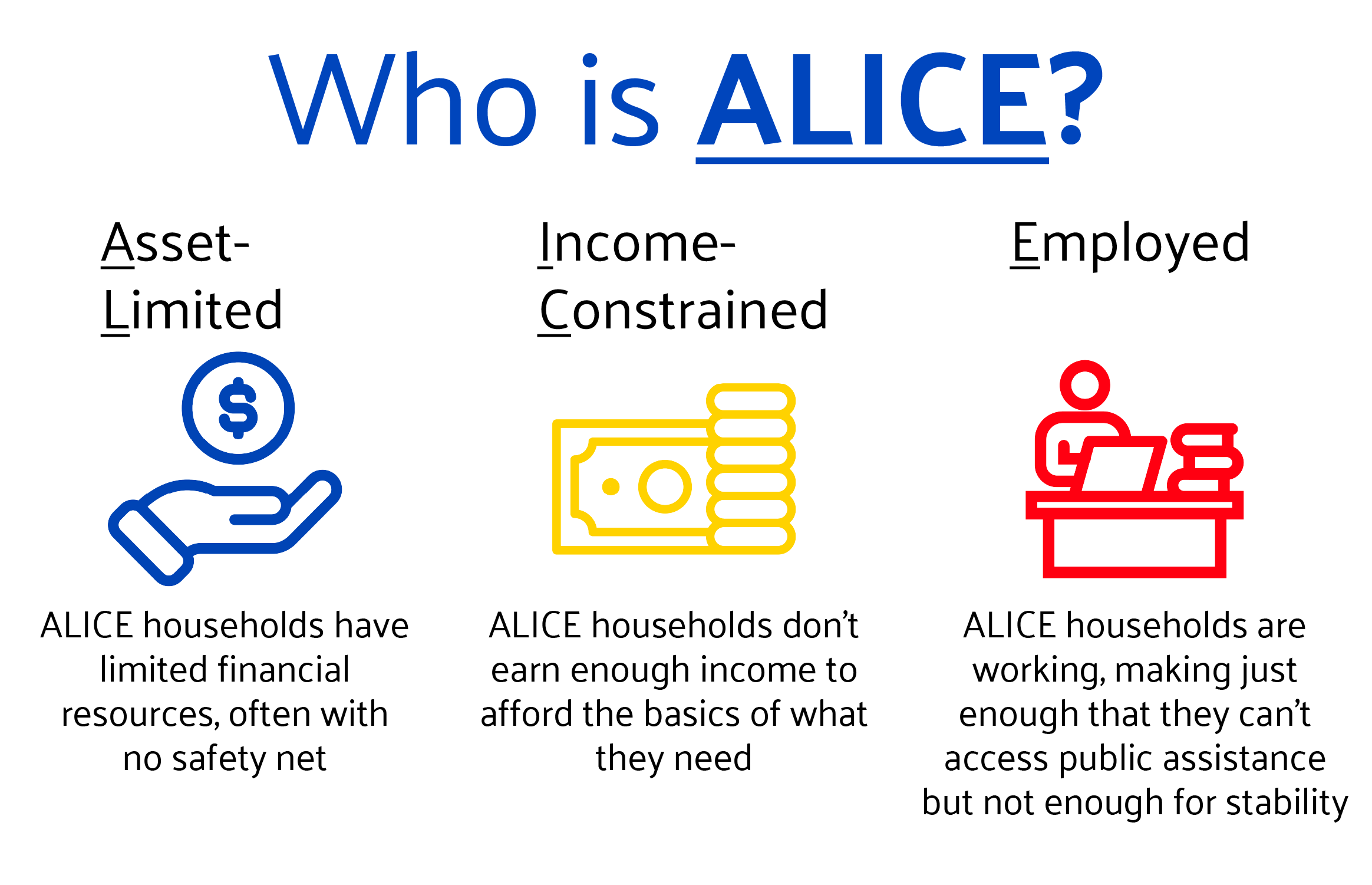WORK FOR IMPACT
ALICE in Lane County
ALICE stands for Asset Limited, Income Constrained, Employed. ALICE households earn an income above the Federal Poverty Level but still don’t make enough to afford the basics of what they need – or are just one missed paycheck, one car breakdown, or one rise in monthly rent away from financial crisis.
ALICE households make just enough money that they can’t access public assistance – but not enough for financial stability. ALICE families are often stuck in an ongoing battle between what they need and what they can afford, and have to make impossible choices like whether to pay an electric bill or buy groceries.
“We all know folks who live in ALICE households – and we know how hard they work. But so many of our neighbors are still struggling. Because it isn’t about people not working hard enough. There is no working hard enough when the cost of living is rising and wages aren’t keeping up, or when systemic barriers stand in the way of families reaching financial stability.”
ALICE in Our Community
2023 LANE COUNTY POINT-IN-TIME DATA
Population: 381,181
Number of Households: 162,001
Median Household Income: $70,374
(State average: $80,160)
Labor Force Participation Rate: 60%
(State average: 63%)
ALICE Households: 28%
(State average: 30%)
Households in Poverty: 15%
(State average 12%)
Per the most recent report from United for ALICE, as of 2023, 43% of households in Lane County live below the ALICE threshold; this includes 15% of households in poverty and 28% ALICE households.
That’s 43% of our neighbors, colleagues, and fellow community members, including folks who serve as our community’s essential workers like home health aides, child care providers, healthcare workers, nonprofit service providers, delivery drivers, grocery store cashiers, and more. These are people we rely on to keep our families safe and in good health.
This map of Lane County’s census subdivisions shows which areas have a higher concentration of households living below the ALICE threshold (poverty-level and ALICE households combined). Oakridge has the highest percentage of households living below the ALICE threshold at 65%, while Coburg has the lowest percentage at 26%.
Communities of color and people living in rural areas – two of the priority populations served by United Way of Lane County – experience ALICE at even higher rates than their neighbors.
There is also substantial variation in the number of households who live below the ALICE threshold throughout the county. The map shown here is shaded to show the percentage of households that are living below the ALICE threshold (poverty-level and ALICE households combined) in different Lane County communities. The darker the blue, the higher the percentage.
ALICE Over Time
Households move below or above the ALICE Threshold as economic factors and circumstances change. The line graph to the right shows the number of ALICE and poverty-level households (solid blue lines), as well as the trend over time (dotted gray lines).
While the change in data from 2022 to 2023 shows that the number of ALICE households went down slightly, the number of households below the poverty-level increased.
United Way Supports ALICE Families
United Way of Lane County invests in a wide network of programs, addressing day-to-day needs of families now and supporting cross-sector coalitions creating long-term solutions for community-wide problems. Our Community Support grants help organizations increase ongoing stability for children and families, while our Community Transformation grants support collaborative partnerships tackling complex challenges faced by kids in Lane County. Many of the programs we fund help meet the basic needs of ALICE families around the county.
Learn more about how United Way of Lane County invests in the success of ALICE families in our communities here.



